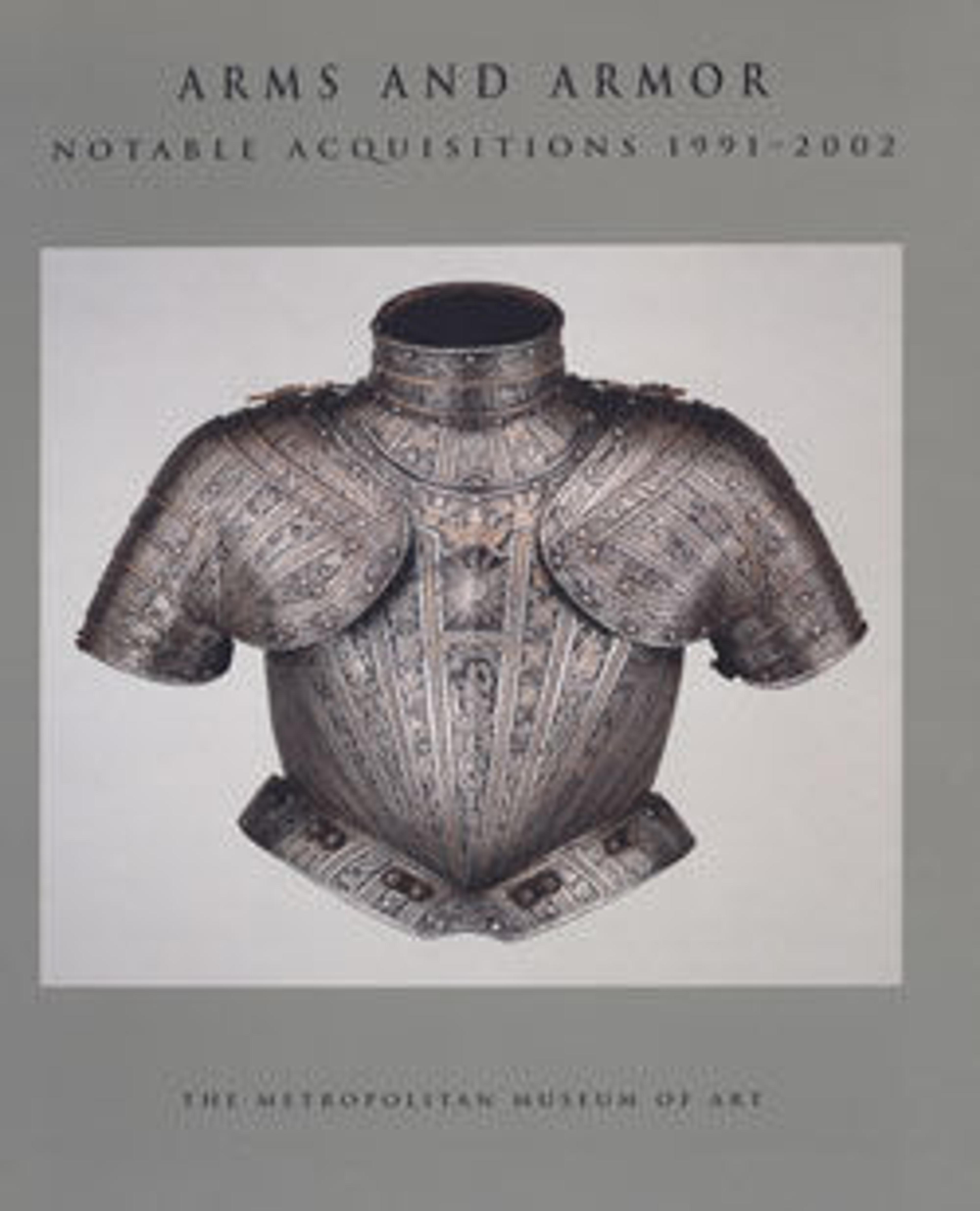Pair of Flintlock Pistols
These pistols rank among the most lavishly embellished Neoclassical English firearms known. They are the masterpieces of Samuel Brunn, a leading London sword cutler and gunmaker who held appointments to the Prince of Wales (later Prince Regent and King George IV, 1760–1830) and other members of the royal family, as well as to the government's Board of Ordnance. The barrels and locks are of blued steel engraved and gold-inlaid with trophies of arms and foliage. The decoration of the stocks, combining engraved sheet-silver inlay and heavy cast and chased silver mounts, was inspired by contemporary French Empire firearms. The mounts, the designs of which appear to be unique to British firearms, are the work of a silversmith using the mark M.B., recently identified as the London sword-hilt maker and silversmith Michael Barnett.
Several of the ornamental motifs are based on ancient Roman sources: a nereid feeding a sea leopard on the sideplate derives from an engraving, published in Rome in 1762, of a wall painting found in the ruins of Herculaneum; and the oval medallion on the trigger guard, representing Hercules with a defeated Amazon, is based on an antique gem known from contemporary engravings and casts after the original. The Medusa head on the butt also derives from classical art, but here the idealized model has been transformed into a grimacing yet almost humorous caricature of the legendary gorgon.
These pistols epitomize the opulence and sophistication of English decorative arts produced during the reign of the Francophile Prince Regent, for whom they were reputedly made.
Several of the ornamental motifs are based on ancient Roman sources: a nereid feeding a sea leopard on the sideplate derives from an engraving, published in Rome in 1762, of a wall painting found in the ruins of Herculaneum; and the oval medallion on the trigger guard, representing Hercules with a defeated Amazon, is based on an antique gem known from contemporary engravings and casts after the original. The Medusa head on the butt also derives from classical art, but here the idealized model has been transformed into a grimacing yet almost humorous caricature of the legendary gorgon.
These pistols epitomize the opulence and sophistication of English decorative arts produced during the reign of the Francophile Prince Regent, for whom they were reputedly made.
Artwork Details
- Title:Pair of Flintlock Pistols
- Gunsmith:Samuel Brunn (English, London, recorded 1795–1820)
- Silversmith:Marked for Michael Barnett (British, Workington, Cumberland 1758–1823 London)
- Date:hallmarked for 1800–1801
- Geography:London
- Culture:British, London
- Medium:Steel, wood (walnut, rosewood), silver, gold
- Dimensions:L. of each pistol 16 in. (40.6 cm); L. of each barrel 10 1/8 in. (25.7 cm); Cal. of each pistol .603 in. (15.3 mm)
- Classification:Firearms
- Credit Line:Purchase, Harris Brisbane Dick Fund and Gift of George D. Pratt, by exchange, 1992
- Object Number:1992.330.1, .2
- Curatorial Department: Arms and Armor
More Artwork
Research Resources
The Met provides unparalleled resources for research and welcomes an international community of students and scholars. The Met's Open Access API is where creators and researchers can connect to the The Met collection. Open Access data and public domain images are available for unrestricted commercial and noncommercial use without permission or fee.
To request images under copyright and other restrictions, please use this Image Request form.
Feedback
We continue to research and examine historical and cultural context for objects in The Met collection. If you have comments or questions about this object record, please contact us using the form below. The Museum looks forward to receiving your comments.
